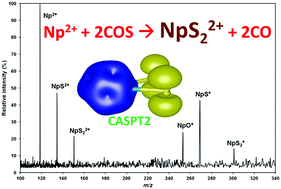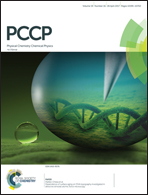Synthesis, structure and bonding of actinide disulphide dications in the gas phase†
Abstract
Actinide disulphide dications, AnS22+, were produced in the gas phase for An = Th and Np by reaction of An2+ cations with the sulfur-atom donor COS, in a sequential abstraction process of two sulfur atoms, as examined by FTICR mass spectrometry. For An = Pu and Am, An2+ ions were unreactive with COS and did not yield any sulphide species. High level multiconfigurational (CASPT2) calculations were performed to assess the structures and bonding of the new AnS22+ species obtained for An = Th, Np, as well as for An = Pu to examine trends along the An series, and for An = U to compare with a previous experimental study and DFT computational scrutiny of US22+. The CASPT2 results showed that, like in the case of uranium, the new AnS22+ ions have ground states with triangular geometries, corresponding to the presence of a persulphide in the case of thorium that formally leads to a stable ThIVS22+ species, while a supersulphide appears to be present in the case of U, Np and Pu, formally leading to a AnIIIS22+ species. The computations also revealed that linear thioactinyl structures are higher in energy, with a difference that increases fourfold upon moving from U to Pu, apparently indicating that it will be even more pronounced for Am.



 Please wait while we load your content...
Please wait while we load your content...